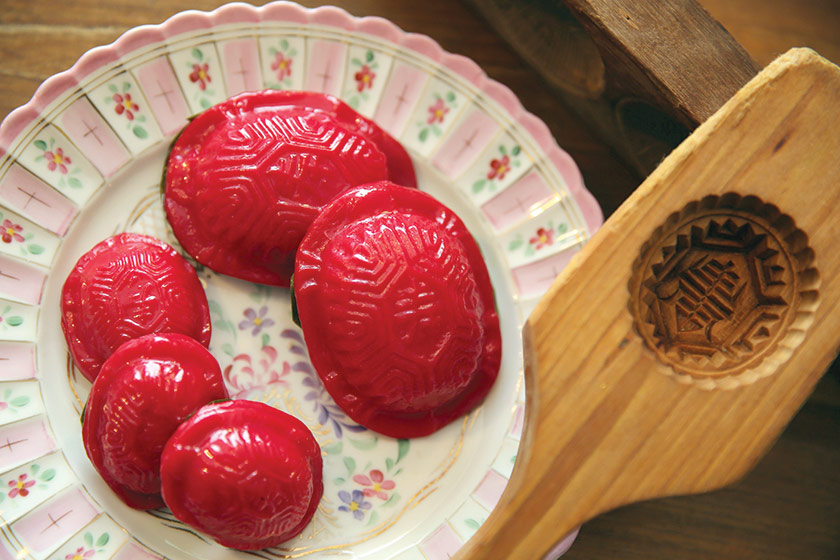PETALING JAYA, March 30 — The Nyonyas are legendary for their kuih, a popular snack in South-east Asia. The multi-coloured kuih come in all kinds of shapes and flavours; they are not limited to just dessert. You can enjoy kuih for breakfast or even afternoon tea. Although kuih is sold in the markets and coffee shops, true blue Nyonya kuih is hard to come by.
Most times, kuih is commercially made to meet popular demand.
Authentic Nyonya kuih needs an artisan touch and traditional methods. It must also follow the ultimate rule of Peranakan food — no short cuts. Usually, this means back-breaking work and constant monitoring during the steaming to ensure perfection. Moreover, the best ingredients like fresh coconut milk are needed for fragrant kuih.
Debbie Teoh, 46, is an advocate of making Nyonya kuih the traditional way from recipes she inherited from her Penang Nyonya aunts. She champions her Peranakan heritage through cooking demonstrations and active participation with the Persatuan Baba Nyonya KL Selangor. The recipe developer wears many hats, from home caterer to cookbook author. She has also established herself as a leading authority on Peranakan food and works with Tourism Malaysia.

One of Teoh’s earliest memories of making Nyonya kuih was when she was eight years old at her grandmother’s house in Malacca. The lady of the house would make kuih as a snack to be eaten together with black coffee served from an enamel pot. Usually, the Nyonya ladies would snack on the kuih as they played their cherki or Nyonya card games.

She remembers how kuih bengka made from tapioca was slow cooked over a charcoal fire – baked on top and the bottom for its signature toasted brown top. “You line a lidded pot with banana leaves to infuse the kuih with its fragrance and charcoal would be placed on the lid to toast the top.”
Together with her young cousins, she would monitor the charcoal fire, fanning the flames and waiting in anticipation for the best bits – the caramelised parts of the kuih that stuck to the banana leaves, which would be scraped off. “The kids found that this was the most delicious part and some of us would even lick the banana leaves,” she recalls.
Another happy childhood memory is making the puffy flower-like huat kuih or sweet rice flour cakes. These are made with toddy or palm wine. “The huat kuih was the most fun as we’d mix our own colours. Grandmother would place the colours in bowls and we’d use toothpicks to mix the colours into the kuih. I would mix all 7 colours together!” she said.

Despite its simple appearance, the making of huat kuih is a bit of a mystery. Sometimes when your kuih does not turn out well, the reason for its failure may not be your skills but a certain pantang as the Peranakans believe. Teoh tells of a belief where huat kuih will not puff open if you make it during your menses. One time, she tested out the theory with two batches, using the same base and true enough, one came out “botak” or without any puffed flower-like topping as she stirred it when she had her menses.

Colours play an important role in Nyonya kuih. Bright colours are for happy occasions but more sombre colours like blue or green are reserved for death anniversaries. “At weddings, if you get the wrong colour, they’ll take out a gun and shoot you. Even the kebaya you wear must be in bright colours. Blue or green colours are not allowed.”
However, there are exceptions to the rule, says Teoh. For instance, pulut tai tai or tekan, the blue and white tinged glutinous rice is served during weddings since it is accompanied by kaya or coconut egg jam that has a golden hue. The natural blue colour is extracted from bunga telang or butterfly pea flowers.

Another exception is kuih dadar or ketayap; these are pandan crepes with a coconut filling as it’s served with a white coconut milk sauce for the happy occasion. Even onde onde, the tiny green balls coated with freshly grated coconut and filled with gula Melaka syrup are served since they represent bountiful blessings. “For weddings, they want the feeling of happiness, abundance and prosperity,” explains Teoh.

Happy colours like red and pink are included in the celebration like kuih genggang or the kuih with the alternating red and white layers. Pineapple tarts also make their appearance since pineapple means “ong lai” and that signifies prosperity while apom bokwa, a type of pancake, is served with pisang raja sauce. “The pisang raja is extremely important for the Peranakans. During Chinese New Year, the Peranakans pray with pisang raja offerings to the ancestors.” Raja which means king in Malay is homnymous with “ong” or the Hokkien word for prosperity.

Shapes for the kuih also carry different significance. The kuih angku or glutinous rice cakes filled with mung bean paste was usually sent out to relatives and friends to celebrate a baby’s first month, along with red eggs. The shape of the red coloured kuih would also bear an important meaning – tortoise for a boy and peach for a girl.
“In the old days, they don’t tell you the sex of the baby, you guessed from the shapes,” says Debbie. The red coloured kuih angku was also reserved for birthdays and pai tin kung or Jade Emperor’s birthday, where it would be shaped into long bars. Usually red, black kuih angku is also served for death anniversaries or wakes.
You can order Nyonya kuih from Debbie Teoh, email her at [email protected]






















